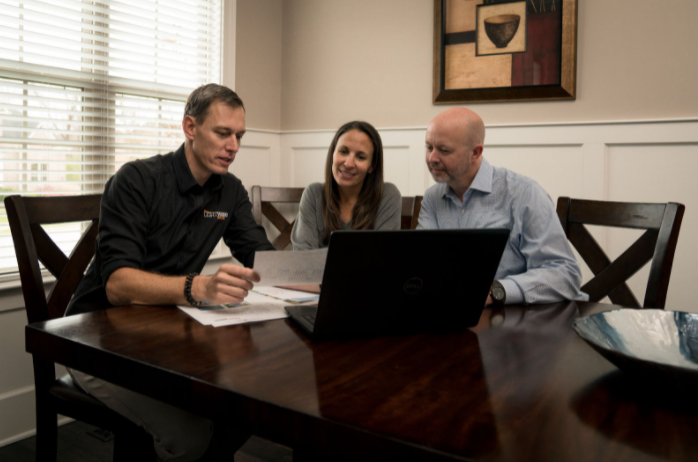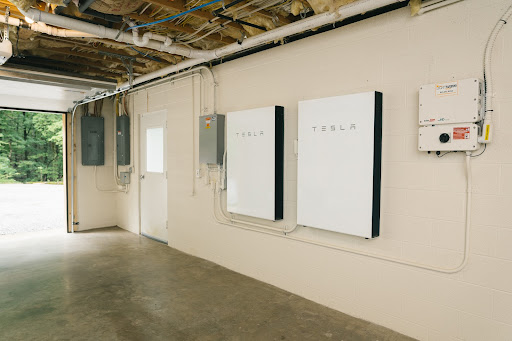Residential Solar Guidelines for New Construction

Over the last 16 years, LightWave Solar has assisted many homeowners, architects, and contractors in Nashville and other areas with the process of building a home that’s ready for a solar power + energy storage system. LightWave can provide solar energy solutions for both new and existing homes, and about half of our residential solar projects are for brand-new properties. When deciding to incorporate solar into your new home, there are a few design aspects you’ll want to take into consideration for an easier installation process and an optimal solution, such as:
- Residential solar energy guidelines regarding roofs and equipment placement
- Electrical requirements for solar systems
- Smart panels
Residential Solar Energy Guidelines
Residential solar guidelines ensure your new home is built and wired in a way that allows for a seamless, elegant installation and an efficient solar energy and battery storage system. Guidelines include structural requirements, electrical requirements, and ways to prepare for solar array placement, like:
- Roof orientation
- South facing roofs allow for the most efficient solar generation. However, east and west facing roofs are still good locations for solar panels and can provide more generation in the mornings and/or afternoons. Never put solar panels on the north face of a roof.
- Roof pitch
- Optimal roof pitch depends on your roof orientation and project location. For example, in the Nashville area for roofs facing south, optimal roof pitch for solar is about 36 degrees.
- Roof space
- For solar panel locations, avoid obstructions like chimneys, dormers, and vents. Allow about 50 sq.ft. per solar kilowatt (kW) installed.
Electrical Requirements for Solar Systems
One of the biggest electrical requirements for a solar + energy storage system is that all electrical loads that are to be backed-up by the system need to be consolidated into a single breaker panel. This breaker panel is typically a 200A main panel, which may feed one or more sub-panels. 200A is the maximum rating allowed.
In Tesla Powerwall systems, the number of batteries determines whether or not your biggest loads, like an HVAC system or EV charger, can be backed up in a grid outage. Each Tesla Powerwall battery can support most breakers equal to 30A or less on a breaker panel, and this support stacks, meaning:
- 1 Tesla Powerwall supports 30A breakers
- 2 Tesla Powerwalls supports 60A breakers and less
- 3 Tesla Powerwalls supports 90A breakers and less
LightWave Solar can work with your electrician to help plan your electrical loads accordingly.

Smart Panels
While installing a smart panel is not required, LightWave Solar recommends them — specifically, the SPAN Panel. SPAN Panel will modernize your home’s energy system by completely replacing a conventional electrical panel, whether new-build or retrofit. SPAN Panel lets you control every circuit in your home, right from your phone. This smart panel pairs exceptionally well with a solar energy and storage system. It provides an easy way to manage your electrical loads during grid outages so you can optimize your available solar energy and storage resources.
Watch an informational video about the SPAN Panel here.
Additional Solar Energy Considerations
A few additional technical aspects to take into consideration before you start a solar energy project include:
- Specific wiring and installation requests
- As your new home is being wired, you can ask your electrician to perform a 1.5” EMT conduit run from the attic space beneath the solar array to the inverter wall location.
- Inverters and batteries can operate indoors and outdoors, but they perform best if installed indoors away from the elements, typically in a garage or utility room.
- Space for your solar gear
-
- LightWave will need about 15 feet of horizontal wall space if gear is all on one consecutive wall area, but the solar gear is not required to be on one consecutive wall space.
Complete List of Residential Solar Guidelines
LightWave created a complete list of solar-ready guidelines based on our many years of solar system installation, Residential Solar Guidelines for New Construction. It includes detailed information on solar array placement, structural and electrical requirements and considerations, gear placement, and simplified electrical diagrams. To get a copy to review and share with your architect, contractor, and electrician, email [email protected].







